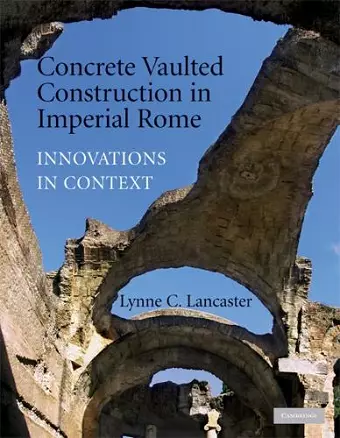Concrete Vaulted Construction in Imperial Rome
Innovations in Context
Format:Paperback
Publisher:Cambridge University Press
Published:9th Mar '09
Currently unavailable, and unfortunately no date known when it will be back

This book examines methods and techniques that enabled builders to construct some of the most imposing monuments of ancient Rome.
Concrete Vaulted Construction in Imperial Rome examines methods and techniques that enabled builders to construct some of the most imposing monuments of ancient Rome. Focusing on structurally innovative vaulting and the factors that influenced its advancement.Concrete Vaulted Construction in Imperial Rome examines methods and techniques that enabled builders to construct some of the most imposing monuments of ancient Rome. Focusing on structurally innovative vaulting and the factors that influenced its advancement, Lynne Lancaster also explores a range of related practices, including lightweight pumice as aggregate, amphoras in vaults, vaulting ribs, metal tie bars, and various techniques of buttressing. She provides the geological background of the local building stones and applies mineralogical analysis to determine material provenance, which in turn suggests trading patterns and land use. Lancaster also examines construction techniques in relation to the social, economic, and political contexts of Rome, in an effort to draw connections between changes in the building industry and the events that shaped Roman society from the early empire to late antiquity. This book was awarded the James R. Wiseman Book Award from the Archaeological Institute of America in 2007.
'Lancaster's arguments mark a more sophisticated approach to the study of Roman architecture than has hitherto been possible. … [H]er extensive on-site studies and simple but handsomely executed line drawings show us how and why Roman vaults and domes stand; how the Romans calculated the strength of their constructions; how changes in materials affected the stability and character of concrete buildings, and how developments in contemporary society determined these changes.' Bryn Mawr Classical Review
'This is a rigorous fascinating study, and excellent background for a trip to Rome …' The Architectural Review
ISBN: 9780521744362
Dimensions: 278mm x 215mm x 18mm
Weight: 970g
296 pages